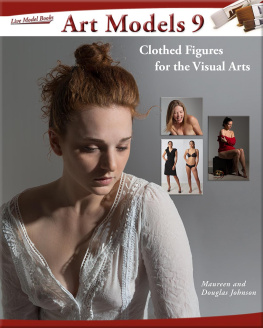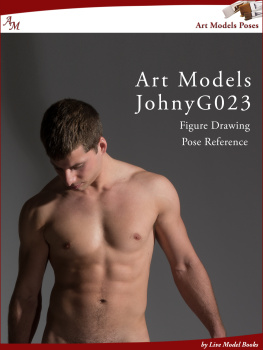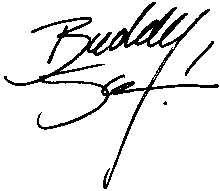Thank you for purchasing this Artist Network eBook.
Sign up for our newsletter and receive special offers, access to free content, and information on the latest new releases and must-have art resources! Plus, receive a coupon code to use on your first purchase from NorthLightShop.com for signing up.
or visit us online to sign up at
http://artistsnetwork.com/ebook-promo
Dedication
To Janet: You are my favorite.
To Danielle and Nicole: Always stick together.
To Mom and Dad: Thank you for a lifetime of support and encouragement.
Contents
CHAPTER ONE
CHAPTER TWO
CHAPTER THREE
CHAPTER FOUR
CHAPTER FIVE
Introduction
If youre reading this book, youre probably one of the following:
a. a working comic professional
b. an aspiring or soon-to-be comics professional
c. just personally motivated to improve your craft.
Books arent cheap, and this one is no exception. That said, you need to invest in yourself. As they say, you have to spend money to make money.
If you are planning to be any of the a, b or c people noted above, youre not alone. There are a lot of people trying to be a, b or c. At one time, creators lived and worked in New York City. They had to be close enough to submit art on a deadline, and this was before FedEx and UPS. The Internet has made it possible for comic creators to emerge from any corner of the earth. These days, you can submit your pages electronically.
What does this mean to you? Well, if you are a creator, you can live anywhere and be a successful pro artist. Thats the good news. The not-so-good news is that the competition is tougher than ever before, and its just going to get more intense.
If you want to be artist a, b or c, you need to bring your A game. Theres no room for subpar creators, because there are so many exceptional artists available. Just look at the pages of modern mainstream comics and you will see some amazing visual storytelling by new and established talent from every corner of the globe.
Ive been a comic book educator for almost twenty years now, and the landscape has changed dramatically since I started. You now have higher-education opportunities, online courses and the emergence of epic-proportioned comic book conventions. There are a lot of ways that you can improve your craft to remain competitive.
That brings me back to this book. My book. The book that you need to buy and use.
If youve invested time, money and energy into your education, congratulations. But learning isnt static, and you need to constantly hone your skills. In short, you need to invest in yourself.
Yeah, you can probably sit in front of your computer and hunt for free images on the Internet. But is that a good use of your time? Or does it make more sense to invest a few bucks in your own professional creative toolsincluding photo referenceso you can focus on your art? How many hours of Googling do you need to do to save the cover price of this book, which is equivalent to a couple of Caramel Macchiatos at Starbucks?
Eliminate distractions and focus on your craft, no matter what your personal motivation might be for doing that. Consider the amount you will spend on this book or any professionally relevant tool and then compare it to the other things you spend money on that dont necessarily progress your goals.
My father always taught me that a craftsperson needs good tools. Save money in other places, but never scrimp on your tools. You risk having a negative impact on your work, and the cost savings are rarely worth the long-term cost to your career.
If youre focused on improving your craft as a comic artist, consider the tools and resources you use. This book is an essential starting point and a foundational tool for your personal and professional growth.
Invest in yourself. Be the artist you want to be.
ComicBookSchool.com
How to Use a Photo Reference
BY SEAN CHEN
Youd think that looking at photo reference would be a simple and straightforward process. But it isnt. Photographs and comic book pages are two-dimensional representations of three-dimensional objects.
An experienced artist can trick the viewer into seeing 3-D people, places or things by leveraging art techniques such as foreshortening, shading and perspective. A good photograph can help you add weight, depth and realism to your illustrations. But first you need to know how to look beyond the flat image of the photo to see form and motion.
From an emotional standpoint, a reference photo with two light sources adds drama, depth and feeling to the figure.
STEP 1: Find Your Photo
Look for a photo that gives you the pose you need to tell your story. There are only so many ways that the body can move and twist, but there are infinite ways to draw it. As an artist, you can move your mental camera in any possible angle to create a fresh and exciting illustration. Choose a photograph that closely approximates the picture you want to draw. It may not match perfectly, but as an artist you can borrow gestures and expressions from other photographs or something that you envision in your head.
This photograph shows a tall, physically powerful man throwing a punch. The low angle of the shot makes him seem even taller and more imposing.
STEP 2: Understand Three-Dimensional Space
The model in this photo exists in the real world, in 3-D space. But the photograph shows only a 2-D representation of this person. Our minds allow us to use visual cues to perceive depth and distance in a flat image.
Try to move the mental camera I mentioned in step 1 to a vantage point directly above the figure and then draw what the model is doing in the 3-D space. This will allow you to see how the body is moving in the real world. You can see that this models body is moving forward while one of the legs remains firmly behind. Most of his body weight is on the left leg. All the other body parts fan out from this point.






















